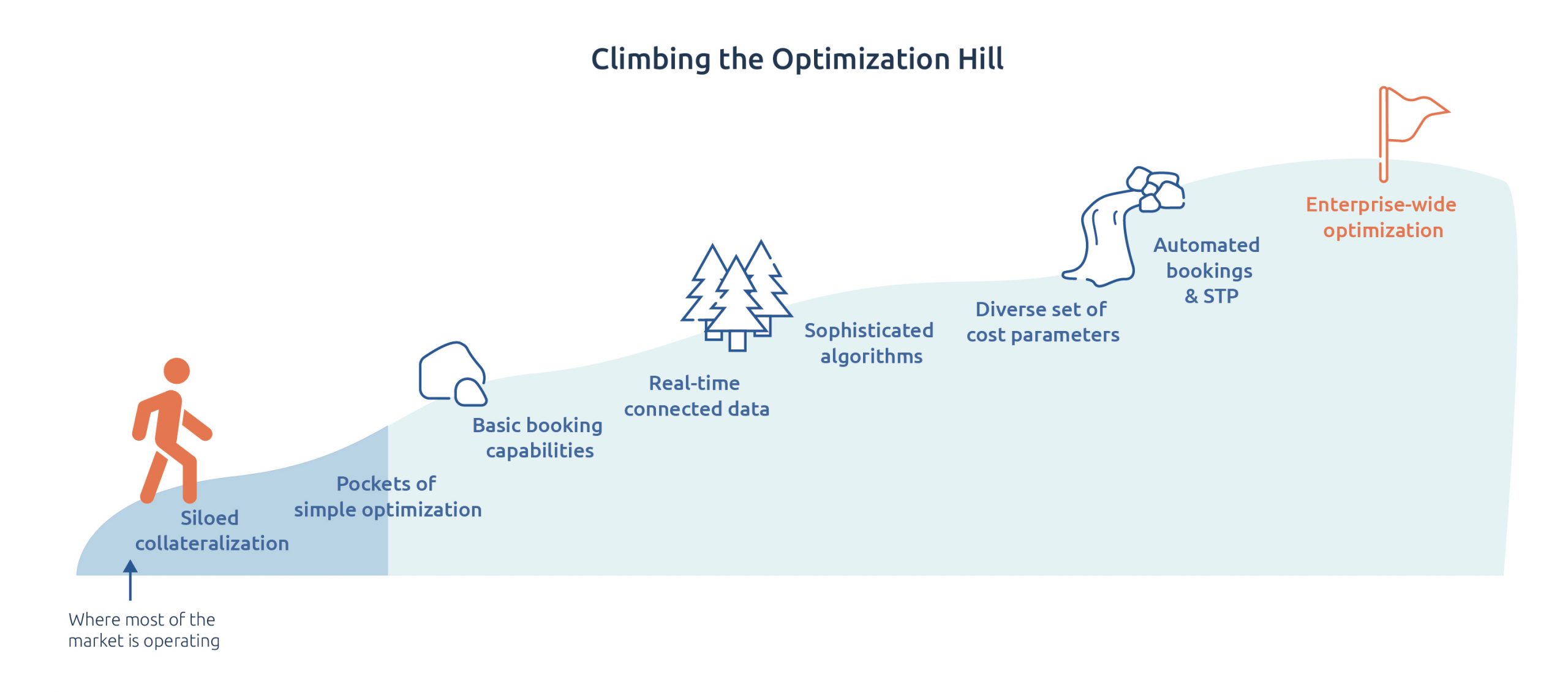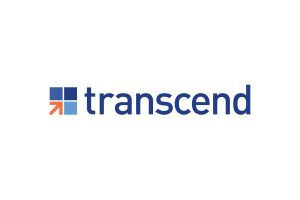Many institutions view collateral optimization as a project that, once completed, checks an important box and doesn’t need to be revisited. They’re wrong. In fact, collateral optimization is an ongoing activity that requires partnering with operations and regular check-ups across regions and silos to ensure maximum efficiency. Automating the process of collateral and global inventory optimization and streamlined bookings can deliver significant competitive advantage. A guest post from Transcend.
The business of collateral optimization has changed radically. In 2020, banks can no longer accept linear priority lists for collateral delivery because when viewed globally across balance sheets and product lines, this no longer makes sense. What was a cutting-edge solution even five years ago is now leaving money on the table. Automation is a central part of this change.
Automation of collateral optimization has shifted how solutions get implemented. While both vendors and institutions would always prefer one solution that provides turnkey results, it now requires far more than simply the ordering of collateral lists to deliver the outsized value seen in the past.
Optimization is an ongoing process that requires both sophisticated software and engaged stakeholders. In this article we discuss recent client lessons, including five key observations from clients on how institutions need to consider collateral optimization, and how our clients are approaching the next complex layer of global inventory optimization.
Client lessons on operationalizing the process
Collateral optimization requires a complex mix of people and technology. While automation is usually a desired end-state, there are an extensive number of processes, regulatory and client constraints that need to be incorporated first. In the past few months, Transcend has learned some important lessons working with clients:
- Automation can outstrip human capacity. Collateral recommendations from an automated optimization platform may produce more results than staff can handle. At one client, we found 400 recommended optimization moves a day. The head of collateral operations told us that 400 was an extreme amount given his team’s existing workload; 50 additional moves a day was more reasonable. As a result, we designed an output that maximized optimization for a customizable limit of 50 moves. This may not have captured the last penny but was operationally and financially optimal for the organization.
- Timing and cutoffs matter. A holistic view of all inventory across the organization is best, however, a simple snapshot in time could mean that some assets are available in one region but not another. Firms will find themselves optimizing at multiple times throughout the day owing to cutoff times at clients, depending on region, and when market infrastructures like central securities depositories (CSDs) and central counterparties (CCPs) are open for business. It’s a necessity to have a real-time view of global inventory that is rich in contextual details such as “free and available to use”.
- Advance preparation is essential. Collateral optimization may be practically or legally impossible on short notice due to collateral movement requirements. Systems must be in place to move collateral, whether a book entry or a cross-jurisdictional trade. Tools must be built in advance to net down legal entities or create a sequencing of moves that would otherwise be blocked by batches, manual limitations, legalities and timing cycles.
- Optimize the optimizers. Third party service providers including tri-party, CCPs and CSDs want to optimize collateral for clients. This works for a client with all of their assets at one optimizer, but in practice, global organizations have a complex asset-liability footprint. As a result, some of our clients have begun to “optimize the optimizers”, taking control of the final result using their own tools. Since the client has the ultimate final visibility into all assets, only their comprehensive analysis can create a universal best outcome.
- Fixed costs need to be considered. Linear programming works well with variable costs but can miss the fixed costs of collateral or custody movements that can turn an otherwise profitable collateral placement into a money-losing proposition or bad client experience. Fixed costs such as settlement can be difficult to model. What’s needed is a mixed-mode operating model that considers both fixed and variable costs.
These examples are the next iteration of collateral optimization, which recognizes the importance of both automation and also the realistic limitations of a human-centered process.
Global inventory optimization: the next big step
Aggregating inventory globally to a central data hub ensures that collateral optimization considers all available assets at any given times. It sounds easy but in practice contains substantial complexity, in particular the requirement that systems communicate with each other and that descriptive information about each asset is collected and accurate.
To date, collateral optimization has been a tactical and localized process. Individual business units have successfully delivered optimization for their region or silo but that has left the firm as a whole in the dark about where enterprise scalable opportunities may lie. Few firms have a holistic optimization strategy in place and fewer still have implemented one globally, but most recognize that tactical solutions have reached their limits. The next evolution of collateral optimization needs to occur to deliver on its promise of reduced costs and greater operational efficiency.
In an earlier article, Connected Data: The Opportunity for Collateral and Liquidity Optimization, I discussed the importance of connected data, or metadata, to global inventory management. This information covers: the tenor of a position; who the owner is; whether the position is owned by the firm or a client; rehypothecation status; and where it can be pledged at the lowest haircut. This enrichment process is still not conducted by most firms, resulting in real opportunity costs as assets aren’t fully optimized against the firm’s liabilities.
A global inventory optimization effort looks to solve for this problem by developing and assigning connected data to each asset. The process can be complex, but the end results deliver a level of collateral optimization that is robust and scalable. This is a cornerstone of broadening out the impact that optimization can have for financial services firms, starting from data and delivering through to actionable results.
Exhibit 1: Generating results from robust collateral optimization
Source: Transcend
Effective global inventory optimization is an input to solving an array of other problems, including:
- Transfer pricing models
- Scenario-based optimization
- Increased automation
- Regulatory reporting
- Internal connectivity
- Benefits to customers
Bringing optimization to the front office
Solving the problems of global inventory management and process automation while building tools for human/technology/process engagement is Transcend’s core business. The client examples discussed here show that collateral optimization works best with tools that are well thought-out in advance. We continue to work with our clients to explore where the boundaries lie in optimizing not just collateral but also the process.
Automation of collateral optimization can clearly be a competitive advantage. With hundreds of millions in revenue on the line, advanced firms are now looking to integrate pre- and post-trade across silos. Deciding whether to use collateral for a repo vs. deliver for an OTC derivatives transaction has been discussed since optimization has been around, and firms are now in a position to actualize this intelligence. Collateral optimization is not easy, but the promise of delivering meaningful results to the front office could unlock a new generation of technology development in the collateral space.
 Bimal Kadikar
Bimal Kadikar
Founder and CEO, Transcend
Bimal Kadikar is the founder and CEO of Transcend, a technology firm dedicated to helping financial institutions optimize collateral and liquidity enterprise-wide to increase efficiency, reduce risk and drive greater business performance. Bimal leads Transcend’s business and product strategies, working closely with major global banks to implement modular, innovative technology solutions that connect the front-to-back office for sharper funding and capital decisions.
Bimal previously served in several senior roles at Citi Capital Markets Technology Division. He also led the global technology organization for Citi’s Fixed Income, Currencies and Commodities (FICC) businesses, and built the Prime Finance, Futures & OTC Clearing technology platform, expanding Citi’s growth. Bimal spearheaded Citi’s firm-wide post-2008 crisis strategy for Collateral, Liquidity and Margin, leading to the inspiration for founding Transcend’s next-generation collateral and liquidity management solutions.


